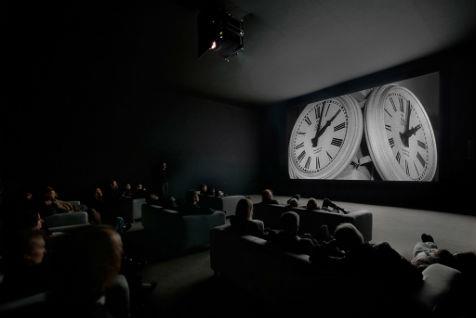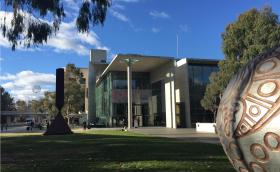Certainly digital natives are used to entertainment in bite size chunks: the average length of a YouTube video is a mere 4 minutes and 12 seconds.
But in the live performance sphere, long shows are in vogue and there’s no reason to believe digital inattention is translating to all audience experiences.
In fact there is some evidence to suggest intense and engaged audience experiences might sit comfortably with a consumer culture used to certain kinds of digital entertainment.
Last week Melbourne audiences flocked to Philip Glass’s Einstein on the Beach, a four-hour marathon made longer by its lack of narrative and repetitive score.
Later this month Gabriella Smart will perform the six-hour solo piano work Inner Cities by Alvin Curran, an event interestingly to be held at Monash University’s Religious Centre
Both Einstein and Inner Cities allow audiences to come and go – in fact the latter encourages its audience to wander, meditate or bring a yoga mat – but they make a virtue of continuity with no intervals.
More traditional concentration will be required for Wagner’s Ring Cycle which Opera Australia will perform in November-December. But that clearly is not discouraging audiences. All performances of the nine hour cycle – spaced across four days – have sold out, though the cheapest tickets were $1000 a piece.
Very long form performance art has always had its followers – the Melbourne Ring Cycle marks Wagner 200th birthday and though Glass is aggressively modern he has passed his 76th birthday.
What’s interesting about this current spate is that it suggests nothing about the digital world is changing the capacity for at least some sections of the arts audiences to hunker down for the long haul.
If anything, art as an endurance event for both audience and artists seems to be having a revival: sustained performances have an impressive athletic quality. Similarly all night festival marathons like White Night and Vivid Sydney are showing contemporary audiences excited by the long haul.
Perhaps art is digging its heels in to prove that the cultured audience is not as flighty as the twitterverse but perhaps too, the new media audience is not as unable to concentrate as is popularly suggested.
Much as hyper-linking and hyper-accessibility can cause a metaphorical attention deficit disorder for the audience (it’s tempting to hyperlink that just to see if you can resist), the truth is there is plenty about that enhances opportunities for concentration.
The download generation is understandably astonished and frustrated by the way we used to watch TV – those 30 minute shows with a block of ads in the middle and then a week’s distractions before you found out what happened next.
Similarly an aficionado enthralled with a video series, thinks nothing of watching four or five hours of back to back episodes or even spending an entire weekend on a movie marathon. They hypnotic quality of video games is legendary for prompting sustained narrow focus.
Just as digital books give us the opportunity to move away from defining book length by what’s economic to print or comfortably to hold, the experience of absorbing entertainment in differently-sized packages may be opening up audiences for a greater variety of performance lengths.
But intervals or the capacity to come and go will remain essential. Technology has yet to address the issue of bladder size.






